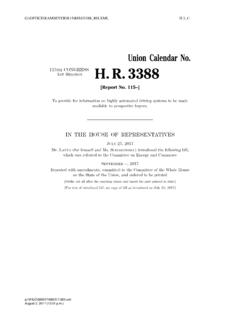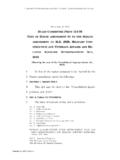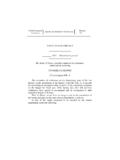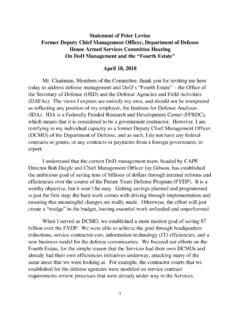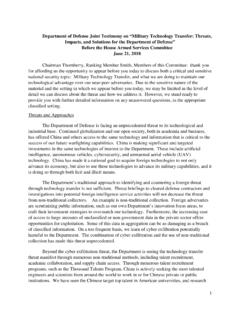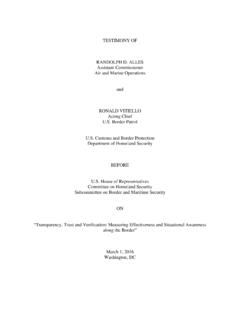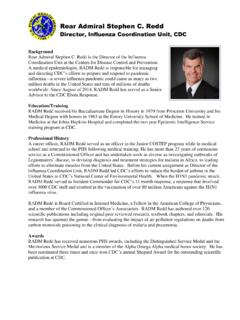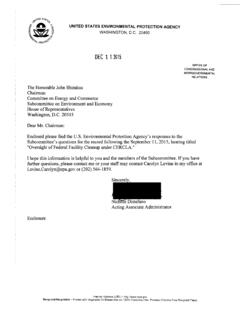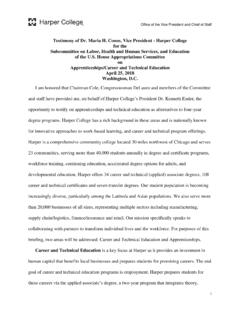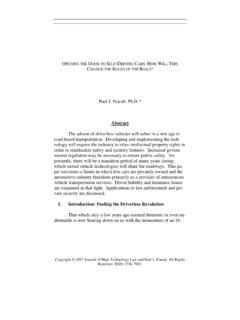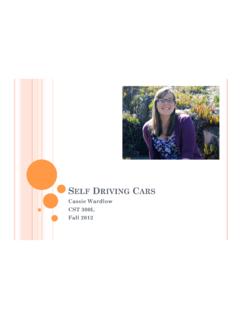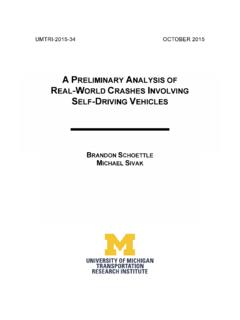Transcription of United States House of Representatives Subcommittee on ...
1 United States House of Representatives Committee on Energy and Commerce Subcommittee on Digital Commerce and Consumer Protection self -Driving cars : Levels of Automation Hearing March 28, 2017. Statement of SAE International S. William Gouse, Director, Federal Program Development Chairman Latta, Ranking Member Schakowsky, and distinguished members of the Subcommittee , SAE. International thanks you for the opportunity to submit this statement for the hearing: self -Driving cars : Levels of Automation . SAE International is a global society founded in 1905 with more than 140,000 engineers, scientists, related technical experts, and students, in over 100 countries, in the aerospace, automotive, motorcycle, commercial, construction, agricultural and specialized vehicles industries.
2 Some notable members were aviation and automotive pioneers Orville Wright, Henry Ford, Amelia Earhart, and Ransom Olds, and celebrities such as Andy Granatelli and Jay Leno. SAE members from government, academia, and industry have testified to this Subcommittee at previous hearings. SAE's core competencies are voluntary consensus standards development with nearly 30,000 experts across the globe contributing to a continually growing standards portfolio of over 10,000 active and 25,000 historical standards used to increase safety, performance, quality, productivity of personal commercial transportation services while optimizing cost of products and product-life cycles.
3 SAE holds 1. dozens of conferences and symposia, including the Government Industry meeting held in January in conjunction with the Washington Auto Show and our World Congress next month in Detroit. These events, plus other mutually beneficial government/industry academic networking opportunities provide information for the formation of sound public policy positions and affiliated programs, products and services that add value and encourage innovation. SAE standards are referenced in government procurement documents, recommendations, guidelines, and in regulations issued by the US Department of Transportation (US DOT), US Environmental Protection Agency, US Department of Energy, the National Transportation Safety Board, in regulations in our States , commonwealths, and inhabited territories.
4 In addition, SAE standards are used internationally, in Canada, elsewhere in the Americas, overseas and by the United Nations Economic Commission for Europe. SAE believes that incorporating voluntary consensus standards by reference as directed in the National Technology Transfer Advancement Act and in Office of Management and Budget Circular- A119 improves the efficiency and effectiveness of government (whether a Federal, state, municipal body, or global harmonization activity), saving time and money, while increasing the efficacy of policy, legislation, and/or regulation.
5 This is critical in order to respond to the policy or regulatory needs brought about by rapid technology developments. These developments are progressing significantly faster, potentially orders of magnitude faster, than the regulatory process. In addition, the competitiveness of adopting organizations' products and services is increased in the global marketplace because of the higher quality, value, and customer confidence achieved through conformity with SAE. standards. SAE has several standards published and many documents in development by a variety of car, motorcycle, pedestrian, and truck and bus committees relating to increasing safety and efficiency of transport.
6 While work continues to improve passive safety and crashworthiness of vehicles, the potential 2. of implementing technological solutions to avoid or reduce the severity of crashes is a major focus of our members' committee activities. These efforts encompass active safety systems, driver assistances systems, cybersecurity, vehicle connectivity and communications, measurement and test devices, vehicle testing including safe on-road testing of automated driving systems, and specific to today's hearing's title, SAE International's standard J3016: Taxonomy and Definitions for Terms Related to On-Road Motor Vehicle Automated Driving Systems.
7 This Recommended Practice originally published in 2014 and revised last September, and referenced in the Federal Automated Vehicles Policy provides stakeholders including Federal, state, and local/municipal legislators, regulators and policy-makers with a taxonomy describing the full range of levels (SAE 0 through 5) of driving automation in on-road motor vehicles. This includes functional definitions for advanced levels of driving automation and related terms and definitions. This Recommended Practice does not provide specifications, or otherwise impose requirements on, driving automation systems.
8 Standardizing levels of driving automation and supporting terms serves several purposes, including: Clarifying the role of the (human) driver, if any, during driving automation system engagement. Answering questions of scope when it comes to developing laws, policies, regulations, and standards. Providing a useful framework for driving automation specifications and technical requirements. Providing clarity and stability in communications on the topic of driving automation, as well as a useful short-hand that saves considerable time and effort. This document was developed per the following guiding principles: Be descriptive and informative rather than normative.
9 3. Be consistent with current industry practice. Be consistent with prior art to the extent practicable. Be useful across disciplines, including engineering, law, media, public discourse. Be clear and cogent, provide functional definitions and avoid or define ambiguous terms. SAE International's Levels Of Automated Driving Automation For On-Road Vehicles: Execution of Fallback System Monitoring SAE Steering and Performance Capability Name Narrative Definition of Driving level Acceleration/ of Dynamic (Driving Environment Deceleration Driving Task Modes).
10 Human driver monitors the driving environment the full-time performance by the human driver of all 0 no Automation aspects of the dynamic driving task, even when enhanced by warning or intervention systems Human driver Human driver Human driver n/a the driving mode-specific execution by a driver assistance system of either steering or acceleration/deceleration using Human driver Human driver Human driver Some driving 1 Driver Assistance information about the driving environment and with the expectation that the human driver perform all remaining and system modes aspects of the dynamic driving task the driving mode-specific execution by one or more driver Partial assistance systems of both
